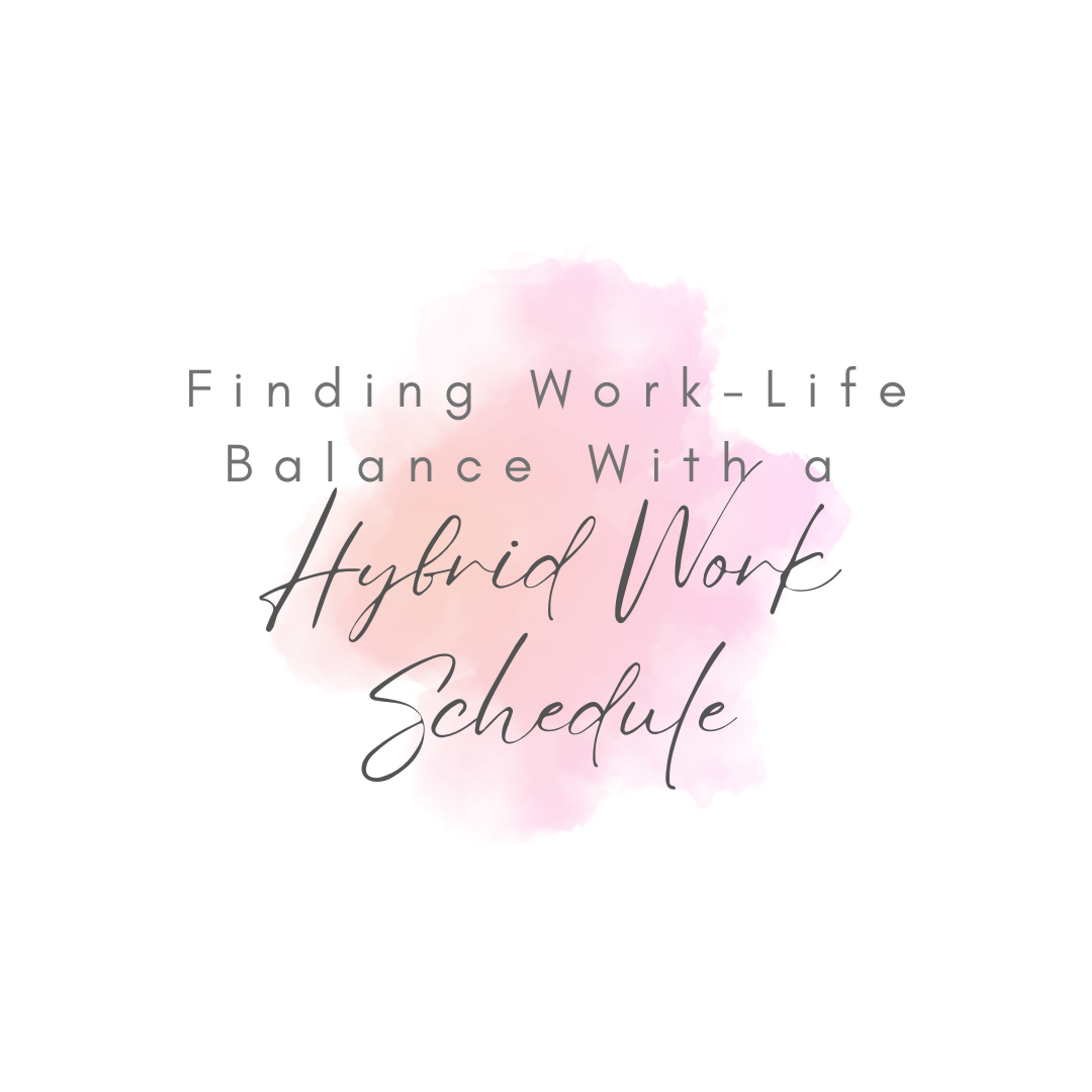Finding Work-Life Balance With a Hybrid Work Schedule


Finding Work-Life Balance With a Hybrid Work Schedule
The pandemic accelerated a monumental remote work trend across countless industries. While some companies are calling employees back to traditional office-based roles, many are adopting hybrid remote models to offer staff flexibility.
Hybrid arrangements splitting time between in-office and remote work provide benefits like reduced commute time and flexible scheduling. But they also present some work-life balance challenges.
Successfully navigating a hybrid schedule requires thoughtful communication, diligent time management, and some personal adjustments. But once you adapt to the fluid environment, hybrid truly offers the best of both worlds – connection of an office and focus of remote work.
In this guide, we’ll explore strategies for maximizing productivity and work-life balance while transitioning to a hybrid work schedule.
Communicate Your Needs
Communication is key for optimizing any hybrid work arrangement. Be clear about your needs and challenges to your manager. Key topics to align on include:
- Your ideal work location schedule and split – What percentage of time do you hope to be on-site versus working remotely? What days do you prefer in each location?
- Expected on-site hours – Will you be expected to be in the office during core “collaboration hours” like 10 to 3? Or can time on-site be scheduled more flexibly?
- Meeting scheduling – Advocate for clustering meetings on office days rather than back-to-back video calls while remote.
- Productivity rhythms – Share when you feel you focus best and have the most energy based on your chronotype.
- Potential challenges – Raise childcare limitations, distractions at home, disconnects from coworkers, lack of boundaries, etc.
Managers may assume all team members want the same schedule and policies unless you speak up. So don’t be shy about expressing your needs and concerns surrounding the hybrid shift.
Negotiate and Compromise
While advocating your preferences, also remain open-minded to compromising should your ideal scenario conflict with business needs or coworkers’ asks.
If your manager initially pushes back on a request for more remote time, could you start with one extra day working from home? Or perhaps commit to coming onsite for important meetings or team building events?
When colleagues’ desired schedules overlap with yours, look for creative solutions. Maybe you take turns choosing preferred office days first or pilot different arrangements to assess what works best for the team dynamic.
Remaining flexible will likely be required as companies determine ideal hybrid policies through trial and error. Reframe negotiations around shared goals like collaboration, productivity and work-life balance rather than personal preferences.
Set Yourself Up for Success
Take proactive steps to set yourself up for productivity and minimize disruptions when working remotely:
- Designate a separate workspace, even if just a corner – Avoid lounging in bed or on the couch which can hurt focus.
- Build transitions into your day – Such as a short walk, outfit change or quick meditation to create mental space between professional and personal time.
- Create a work-from-home routine – Wake up, get ready and start work by a set time to build structure.
- Use productivity techniques – Time blocking, distraction-free deep work sprints, breaking large tasks into batches.
- Dress professionally – Avoid staying in pajamas which can negatively impact mindset.
- Limit home distractions during work hours – Silence phone alerts, shut the office door, use noise cancelling headphones.
With intentional habits and environment shaping, you can stay focused and motivated even without office accountability.
Maximize Collaboration Opportunities
When collaborating across a dispersed team, make an extra effort to connect and communicate proactively.
- Overcommunicate context and status updates on projects through dedicated channels like Slack.
- Join video calls a few minutes early to chat one-on-one before group meetings start.
- Take a share screen first approach to walk through work and answer live questions.
- Send follow-up emails recapping meeting Action Items and next steps to align the team.
- Check in frequently via instant message or video call for quick clarifications rather than lengthy email chains.
- Use always-on communication channels like Slack to replicate tapping a coworker’s shoulder for quick questions.
With intentional practices, hybrid teams can collaborate smoothly across locations. But it requires diligence to prevent remote teammates from feeling disconnected.
Define Your Goals and Priorities
Without the structure of an office, it’s critical to take ownership of how you invest your time and energy. Avoid drifting through days reactively. Proactively define:
- Key quarterly objectives – What 1-3 big projects or goals will accelerate your career and company impact?
- Weekly priorities – On Sunday, plot 2-3 must-do priorities to move top objectives forward each week.
- Daily execution plans – Outline the specific tasks for today to get closer to your weekly priorities and larger goals.
Tracking output and progress without hovering managers requires self-direction. But the flexibility to focus intensely on your most vital work without constant interruptions also empowers phenomenal productivity. Define success proactively in this new environment.
Protect Energy for Priorities
Once you’ve defined your essential priorities, fiercely protect time for focusing on them.
- Block your calendar for 1-2 hour deep work sessions on key projects. Then work consistently without multitasking.
- Bundle like tasks to maximize focus. For example, do all your creative work Monday morning and administrative tasks Thursday afternoon.
- Decline meetings that don’t require your input to avoid mental fatigue. Suggest sending an update instead.
- Limit scrolling and social media to set periods. Turn off notifications to avoid rabbit holes.
Without commutes devouring mornings and evenings, protect that bonus time for self-care and priorities. Optimizing how you spend your energy yields huge dividends over time.
Check for Understanding
When communicating remotely, check for understanding often. Without body language cues, you must explicitly confirm:
- Did my instructions or suggestions make sense?
- Do you have any concerns with this approach?
- What potential issues do you foresee?
- How will you move forward with this project? What are next steps?
Asking validating questions ensures alignment, reduces miscommunications, and empowers the team. Closed-loop communication is essential in dispersed environments.
Set Communication Norms
Agree to team norms surrounding response times and availability to minimize frustration. Be reasonable defining the following policies:
- Expected response times – How quickly do team members commit to replying to messages? Within 24 hours? Same day?
- Best ways to reach urgent needs – Can you call? Text? Mark emails high importance?
- Typical hours everyone is online – When can people reasonably expect responses? Define work hours.
- OOO practices – How will out of office communicate if missing? Autoreply preferred?
Aligning everyone’s expectations for communication rhythms prevents unclear situations where some team members respond instantly and others take 48 hours.
Communicate Your Availability
Help coworkers understand the best ways to respectfully interact with you in a hybrid schedule.
- Share your office location days and typical remote days in your email signature and calendar.
- Indicate lunch or heads down focus time by updating your status inchat.
- If working non-traditional hours, communicate those hours to respect your personal time.
- Explicitly indicate preferred contact methods based on urgency and topic.
The more insight you provide into when, where and how you are available, the smoother coordination becomes.
Utilize Digital Tools
Digital tools bridge communication gaps and enhance flexibility by:
- Enabling video calls via Zoom, Google Meet etc. for face-to-face interactions.
- Allowing instant messaging on Slack, Microsoft Teams etc. for quick questions.
- Facilitating document sharing and collaboration via Google Drive, Dropbox, Notion etc.
- Streamlining project management with Asana, Trello, Jira etc.
- Recording meetings and trainings via Zoom, GoToMeeting, Loom etc for easy playback.
- Automating processes using tools like Zapier to optimize workflows.
- Keeping everyone aligned via systems like Google Calendar, Monday.com, Smartsheet etc.
The right digital toolkit tailored to team needs powers seamless coordination across locations. Leverage technology to your advantage.
Prioritize Wellness
Working from home gives flexibility to better care for your needs when energy is low. Make self care a priority.
- Take breaks away from your desk for quick rejuvenation – a snack, short walk outside, uplifting song.
- Hydrate and fuel yourself nutritiously. Meal prep healthy snacks and lunches onsite days.
- Avoid back-to-back meetings when focus and energy stores drain faster remotely.
- Designate consistent break times each day for renewal.
- Disconnect fully in the evenings and on weekends.
With calendar freedom comes responsibility to use that liberty wisely. Recharge intentionally.
Connect In-Person
While remote work provides focus time, don’t underestimate the value of in-person collaboration. When onsite:
- Schedule creative brainstorms and team building time capitalizing on energy together.
- Join colleagues for lunch
- Attend optional happy hours or events to socialize and reconnect.
- Pop by teammates’ desks to say hello. Stop by new employees’ offices to introduce yourself.
- Pick up cues you may miss remotely, like body language signaling disagreement or disengagement.
- Share personal updates and recent wins to strengthen relationships.
- Ask teammates how they’re adjusting to hybrid schedules and if any support would help them.
Even just one office day per week maintains the connectivity, camaraderie and energy that in-person interaction brings.
Reflect on What’s Working
Continuously assess what’s going well and what could improve in this hybrid experiment. Reflect on:
- When are you most productive and engaged? What circumstances or location enables your best work?
- What practices help you stay connected to remote coworkers? Which feel disjointed?
- Where are communication gaps arising? How might you smoothen coordination?
- What benefits are you experiencing from hybrid scheduling compared to fully onsite or remote?
- What challenges persist? How could you overcome them through shifted schedules or habits?
Keep refining to optimize hybrid policies for business needs and personal work styles. There is no universally ideal model, only what strikes the right balance for your team.
Set Boundaries
Without a controlled work environment, you must take responsibility for defining work-life boundaries at home. Set limits by:
- Logging off on time each day to fully disconnect.
- Defining an out of office automated reply to manage expectations when offline.
- Setting work hours in your calendar and marking the rest as busy time to prevent meetings.
- Using scheduler and focus settings in apps like Slack and Outlook to minimize off-hour distractions.
- Letting household members know when you’re “at work” during the day to avoid interruptions.
- Designating a separate space for work if possible, then leaving it aside during personal time.
Preserving work-life balance with a hybrid schedule requires establishing and communicating personal boundaries. Don’t let work bleed into all hours simply because you can be reached.
Adjust Expectations
Hybrid arrangements differ drastically from traditional 9 to 5 office jobs. Managers and colleagues should adjust expectations around responsiveness, collaboration and availability accordingly.
- Assume people aren’t instantly available to pop into meetings or impromptu discussions remotely.
- Allow for delayed responses depending on if teammates are offline or in the flow.
- Overcommunicate to ensure dispersed teams stay aligned.
- Evaluate performance based on output and achievement of goals rather than physical presence.
With empathy and patience, teams can adapt norms and culture to thrive in a hybrid workplace.
Stick to a Routine
Even if your location varies day to day, starting work and ending your day consistently provides structure.
- Wake up on time. Follow your typical morning routine.
- Begin work promptly, whether at your home office or commuting in.
- Take breaks, lunch and finish work at the same cadence.
- Log off on time. Enjoy your typical evening wind down.
Maintaining daily rhythms boosts motivation and compartmentalizes work time regardless of location.
Plan Onsite Days Strategically
To maximize productivity, thoughtfully plan what days you commute into the office.
- Attend in-person for collaboration meetings, brainstorms or company-wide events where interacting is beneficial.
- Schedule meetings with leaders or mentors onsite days to enable face-to-face connections.
- Come onsite for heads down project work requiring access to on-premise resources.
Remaining purposeful with on-location days prevents wasting time and energy commuting “just because”.
Embrace the Advantages
While hybrid arrangements take adjustments, enjoy the many upsides:
- Saved commute time when working remotely.
- Flexibility to schedule personal obligations like doctors appointments on remote days.
- Ability to focus deeply on heads-down tasks at home.
- More energy without daily getting ready for the office or travel.
- Occasional changes of scenery to stay motivated.
- Opportunities to better support family or roommates.
- Quiet time to brainstorm creative ideas versus constant open office noise.
With intention, communication and boundaries, hybrid provides a truly customized arrangement maximizing your productivity, health and happiness across both personal and professional realms.
Wishing you immense success finding your perfect work-life rhythm in this new era of hybrid work!


